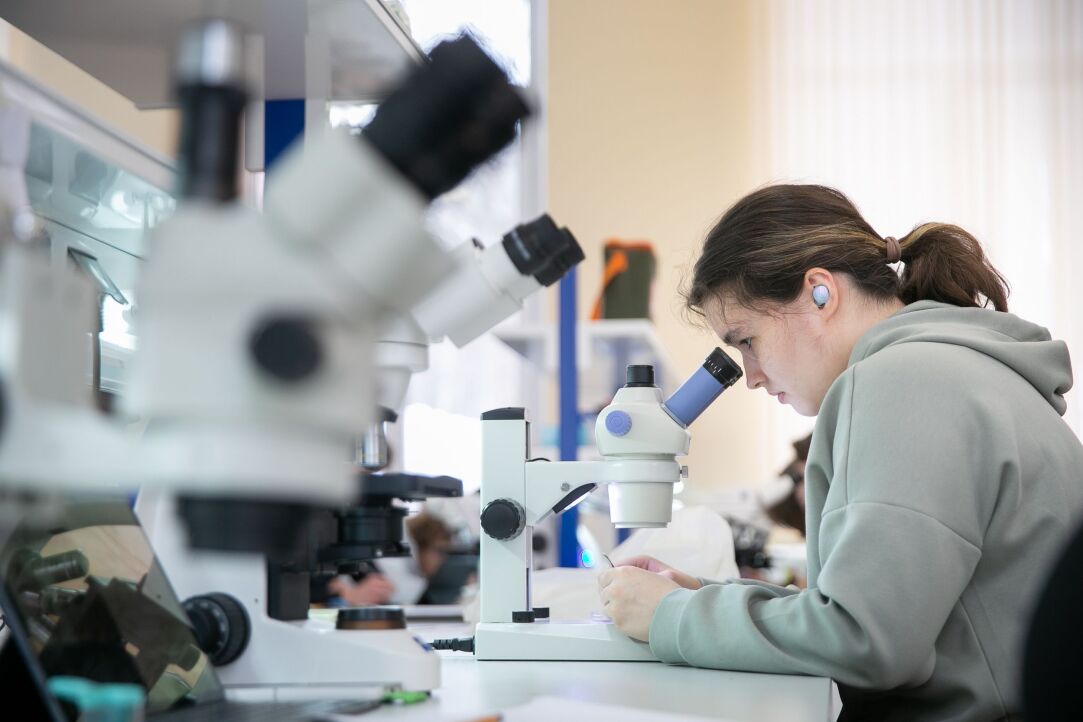
HSE Doctoral Student Awarded for Best PhD Presentation at 58th Societas Linguistica Europaea Conference
From August 26–29, 2025, the largest annual linguistics conference, Societas Linguistica Europaea, took place in Bordeaux, France. Doctoral students and researchers from HSE University took part in the event. The paper ‘Lability Drift in Modern Aramaic languages’ by Elena Shvedova was highly praised by the expert community and took first place among PhD student presentations. In an interview with the HSE News Service, Elena Shvedova spoke about her research and the conference itself.

‘Neural Networks Can Provide Assessments As Accurate As Humans’
Voice assistants have become part of everyday life. They can plan routes, play music and films, and answer questions. But the quality of their speech requires assessment. To address this, students of the Applied Artificial Intelligence Workshop at the HSE University and VK Engineering and Mathematics Schoolhave developed neural networks capable of evaluating speech synthesis.

Scientists Clarify How the Brain Memorises and Recalls Information
An international team, including scientists from HSE University, has demonstrated for the first time that the anterior and posterior portions of the human hippocampus have distinct roles in associative memory. Using stereo-EEG recordings, the researchers found that the rostral (anterior) portion of the human hippocampus is activated during encoding and object recognition, while the caudal (posterior) portion is involved in associative recall, restoring connections between the object and its context. These findings contribute to our understanding of the structure of human memory and may inform clinical practice. A paper with the study findings has been published in Frontiers in Human Neuroscience.

'Research on Post-Soviet Exchange Rate Policy': HSE University–St Petersburg Graduate Participates in Scientific Congress in Seoul
Mark Angelo Gajardo, graduate of the Master's programme 'Comparative Politics of Eurasia,' presented his research at the 28th World Congress of Political Science organised by the International Political Science Association (IPSA).

Researchers Examine Student Care Culture in Small Russian Universities
Researchers from the HSE Institute of Education conducted a sociological study at four small, non-selective universities and revealed, based on 135 interviews, the dual nature of student care at such institutions: a combination of genuine support with continuous supervision, reminiscent of parental care. This study offers the first in-depth look at how formal and informal student care practices are intertwined in the post-Soviet educational context. The study has been published in the British Journal of Sociology of Education.

AI Can Predict Student Academic Performance Based on Social Media Subscriptions
A team of Russian researchers, including scientists from HSE University, used AI to analyse 4,500 students’ subscriptions to VK social media communities. The study found that algorithms can accurately identify both high-performing students and those struggling with their studies. The paper has been published in IEEE Access.

Applications Open for Student Research Paper Competition 2025
The annual Student Research Paper Competition (SRPC) offers students the chance to showcase their work, such as term papers or theses. It is a valuable opportunity to receive expert feedback and recommendations aimed at improving research, as well as to take the first steps in an academic career. Below we outline the key features and deadlines for submitting entries.

HSE Scientists: Social Cues in News Interfaces Build Online Trust
Researchers from the HSE Laboratory for Cognitive Psychology of Digital Interface Users have discovered how social cues in the design of news websites—such as reader comments, the number of reposts, or the author’s name—can help build user trust. An experiment with 137 volunteers showed that such interface elements make a website appear more trustworthy and persuasive to users, with the strongest cue being links to the media’s social networks. The study's findings have been published in Human-Computer Interaction.

‘My Goal Is to Shed Light on How Deaf Children Develop in Russia’
Having completed her PhD in the UK, Valeria Vinogradova dreams of applying her knowledge and experience to create an interdisciplinary centre for deafness studies in Russia. In an interview for the Young Scientists of HSE University project, she spoke about Russian Sign Language, her love of modern jazz, and much more.

‘A Cat That Jumps from the Floor to a Shelf Doesn't Know Newton's Laws’
Anastasia Malashina defended her thesis on a topic related to cryptographic methods of information protection and is now engaged in applied projects in strategic analytics. In an interview with the Young Scientists of HSE University project, she discussed the difficulties she faced during her studies and explained what cryptography is and why large language models will not replace human intelligence.

